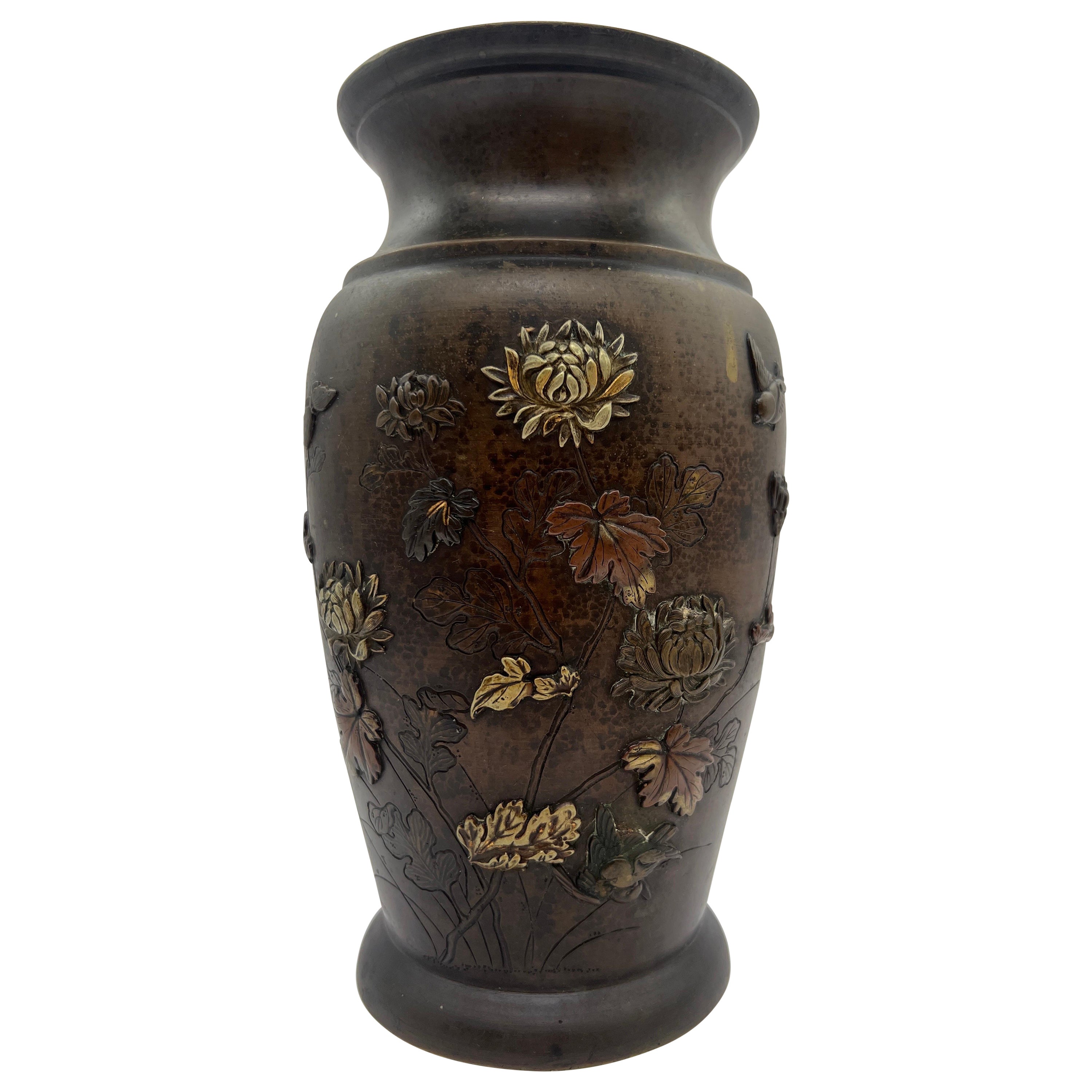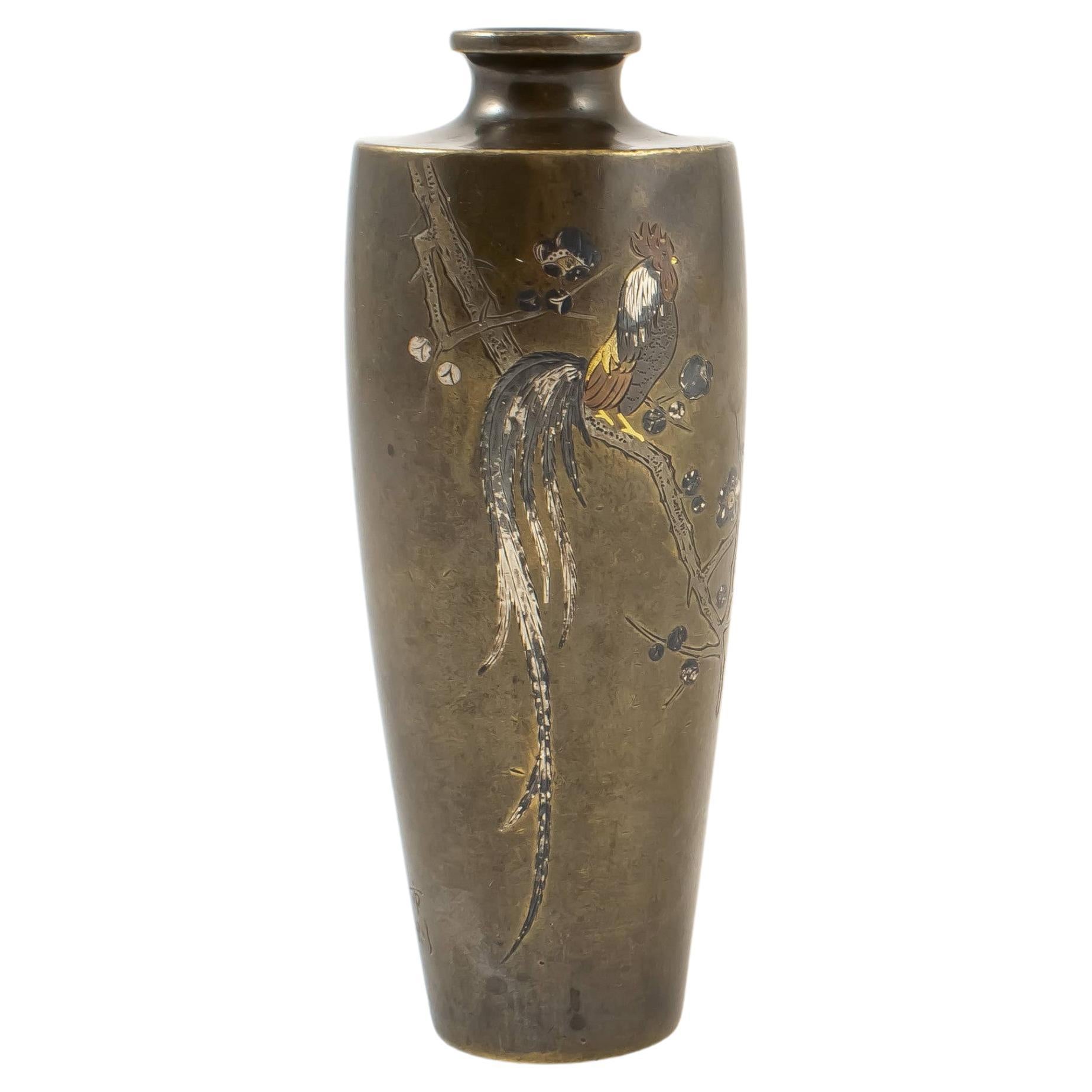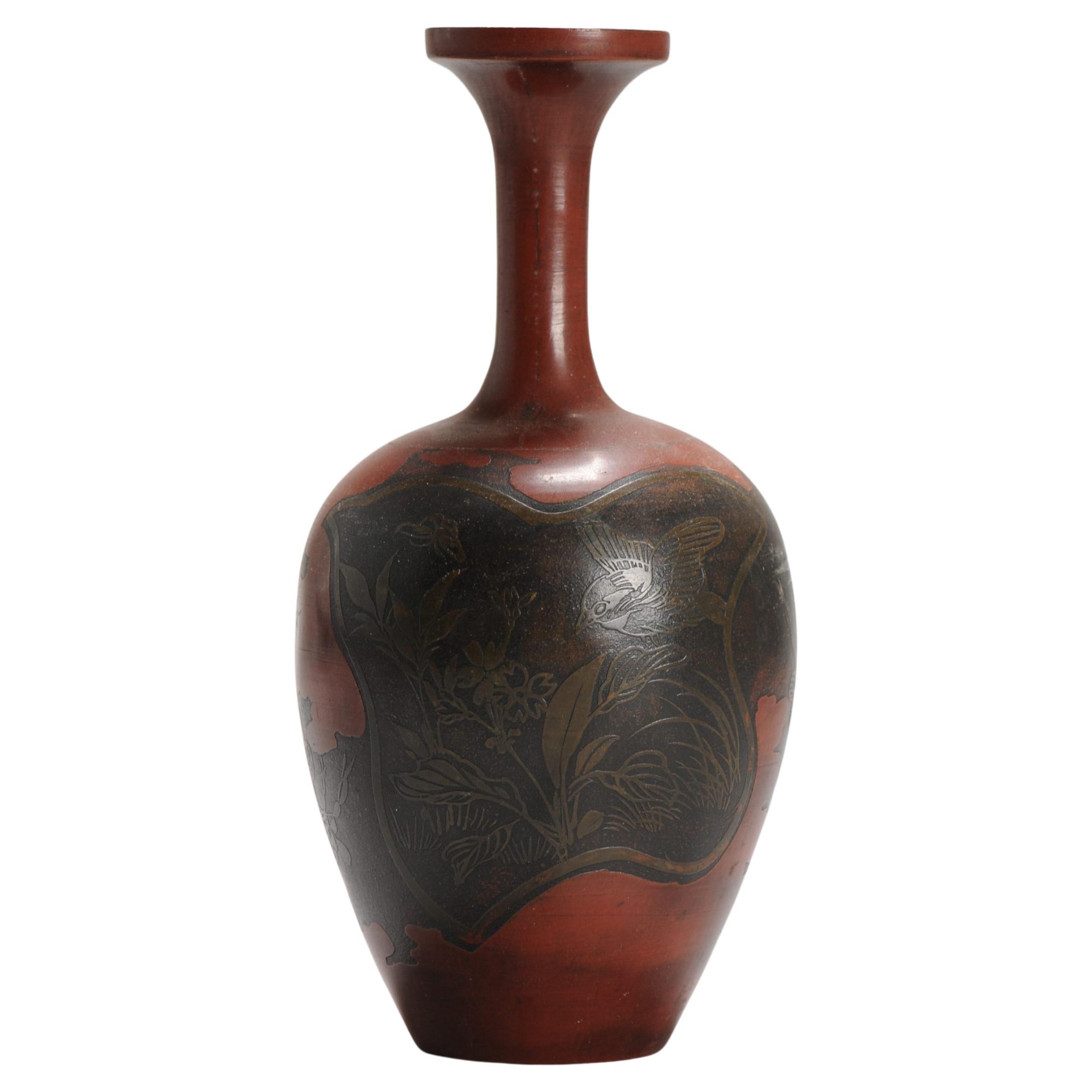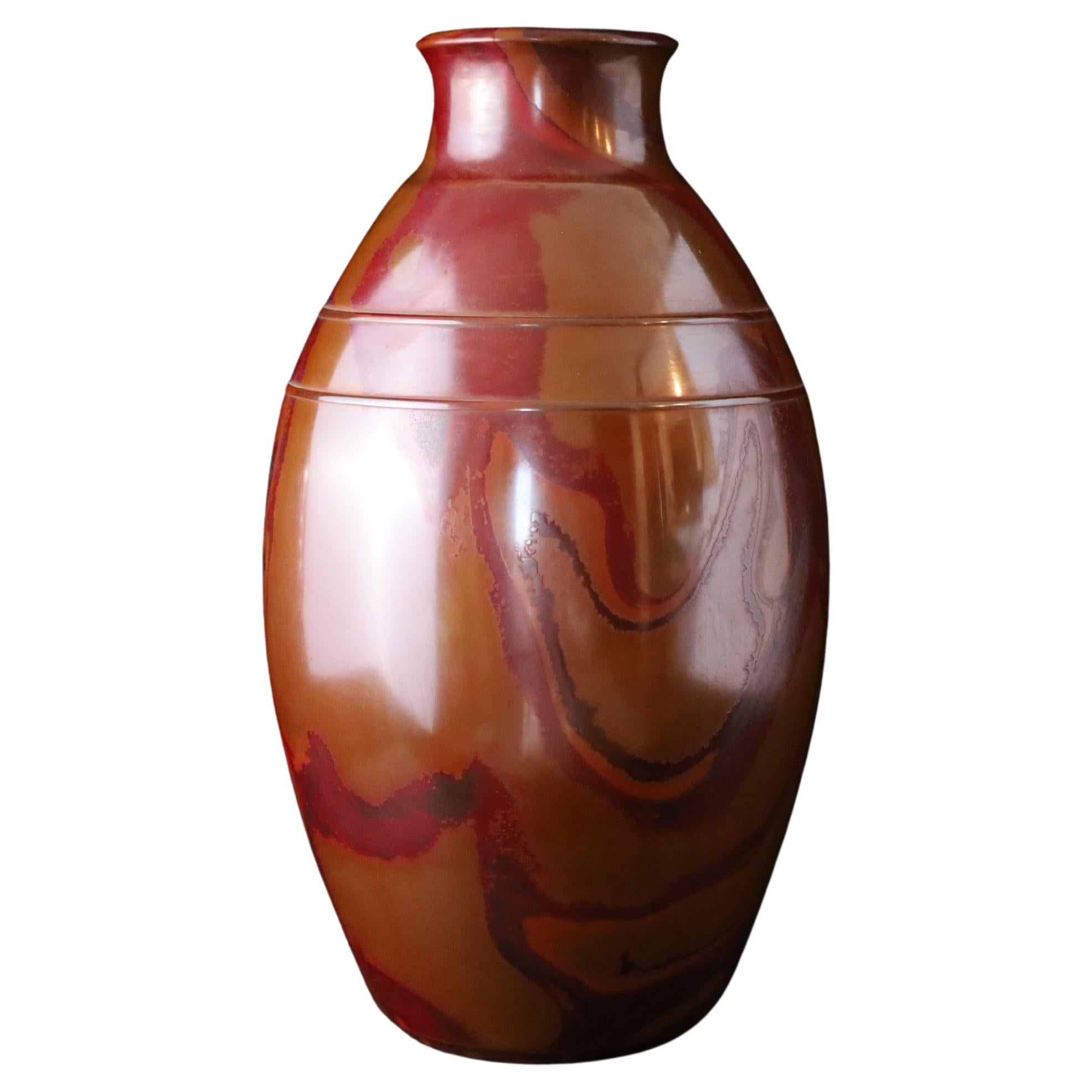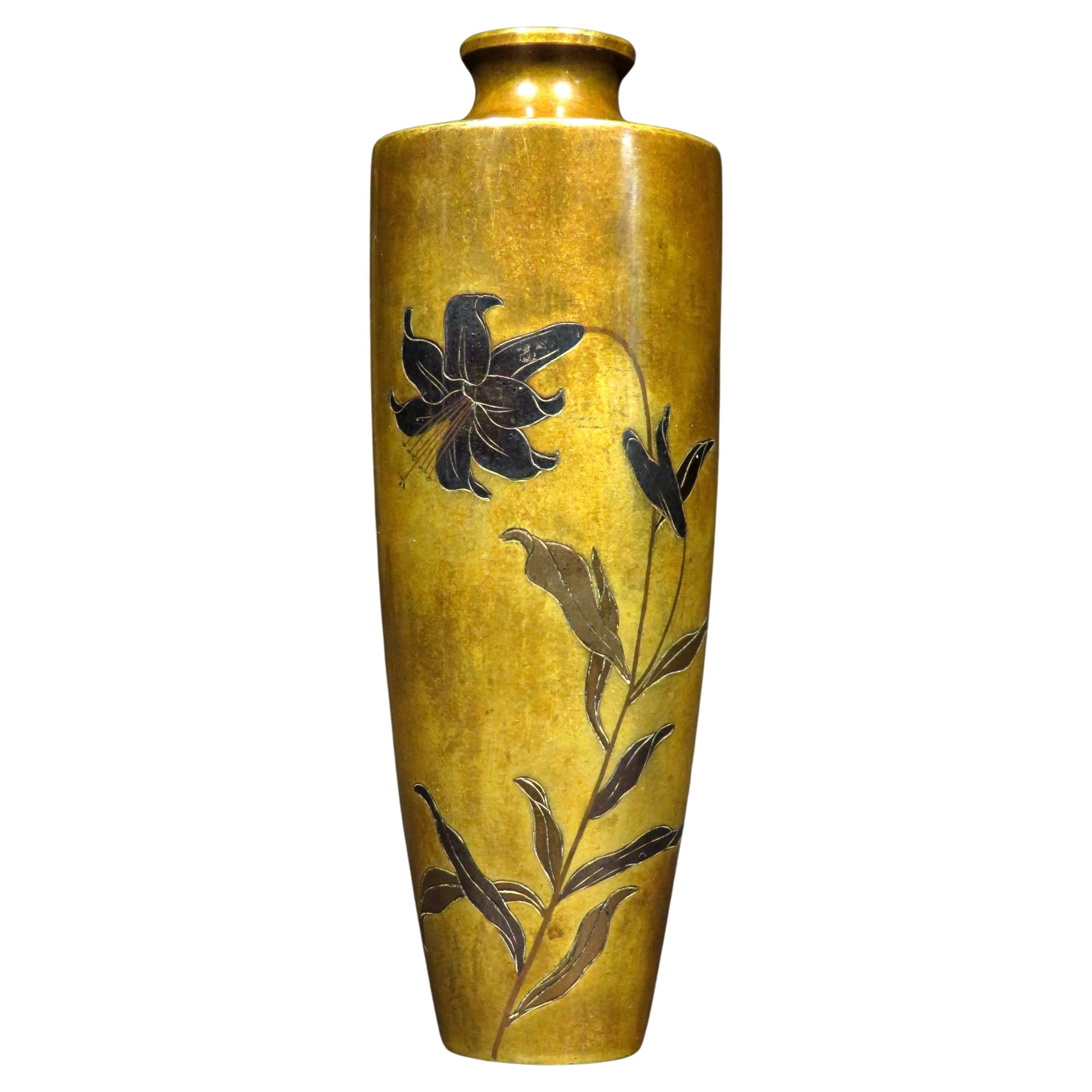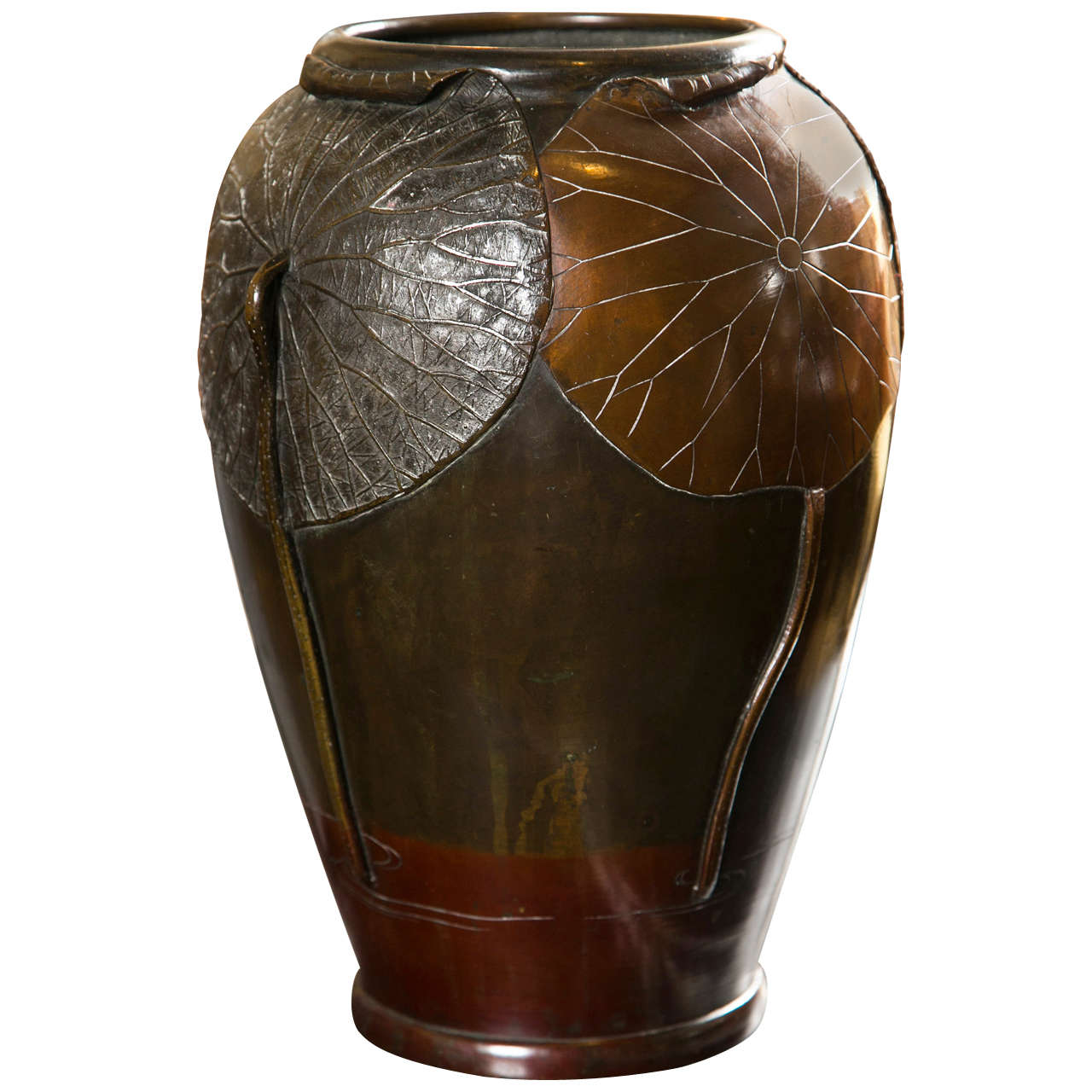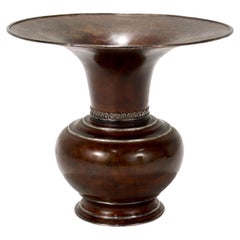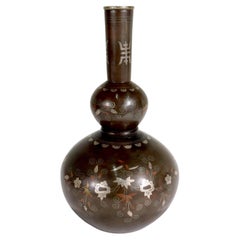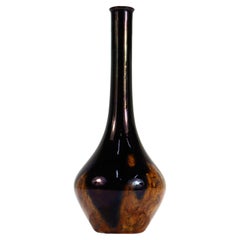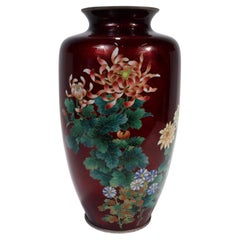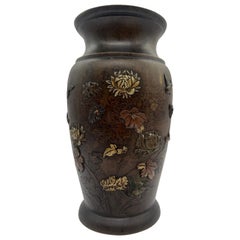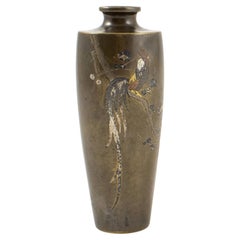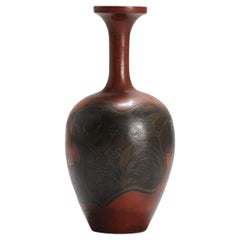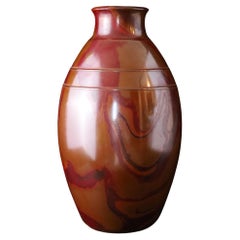Items Similar to Antique Signed Japanese Bronze Mixed Metals Butterbur Vase by Atsuyoshi / Inoue
Want more images or videos?
Request additional images or videos from the seller
1 of 17
Antique Signed Japanese Bronze Mixed Metals Butterbur Vase by Atsuyoshi / Inoue
$1,850
£1,423.14
€1,651.86
CA$2,608.94
A$2,922.45
CHF 1,534.98
MX$35,536.10
NOK 19,437.84
SEK 18,451.73
DKK 12,328.51
About the Item
A fine signed antique Japanese Meiji period mixed metals vase.
By Miyabe Atsuyoshi for Inoue of Kyoto.
With a bronze body and decorated with inlaid gold, silver, and shibuichi in the form of a stylized chrysanthemum and bamboo.
Engraved with the kanji for "Made by Atsuyoshi" to the side and marked to the base with "Made by Inoue".
Simply a wonderful vase from one of the foremost Kyoto workshops of the Meiji period!
Date:
Late 19th or Early 20th century
Overall Condition:
It is in overall good, as-pictured, used estate condition.
Condition Details:
There is some rubbing to the patina principally around the chrysanthemum and its petals, a small indentation or dent to the reverse, and some light nicks to the rim and footrim. Otherwise, there are some fine & light surface scratches and other signs of expected light wear consistent with age.
Measurements:
Height: ca. 6 1/4 in.
Diameter: ca. 2 3/4 in.
Items purchased from this dealer must delight you. Purchases may be returned for any reason for a period of 7 days.
- Dimensions:Height: 8.5 in (21.59 cm)Width: 4 in (10.16 cm)Depth: 3.63 in (9.23 cm)
- Style:Meiji (Of the Period)
- Materials and Techniques:
- Place of Origin:
- Period:
- Date of Manufacture:Late 19th or Early 20th Century
- Condition:Wear consistent with age and use. See description for condition details.
- Seller Location:Philadelphia, PA
- Reference Number:Seller: DSA INV FR O221stDibs: LU1610231498822
About the Seller
5.0
Gold Seller
Premium sellers maintaining a 4.3+ rating and 24-hour response times
Established in 1996
1stDibs seller since 2015
536 sales on 1stDibs
Typical response time: 1 hour
- ShippingRetrieving quote...Shipping from: Philadelphia, PA
- Return Policy
Authenticity Guarantee
In the unlikely event there’s an issue with an item’s authenticity, contact us within 1 year for a full refund. DetailsMoney-Back Guarantee
If your item is not as described, is damaged in transit, or does not arrive, contact us within 7 days for a full refund. Details24-Hour Cancellation
You have a 24-hour grace period in which to reconsider your purchase, with no questions asked.Vetted Professional Sellers
Our world-class sellers must adhere to strict standards for service and quality, maintaining the integrity of our listings.Price-Match Guarantee
If you find that a seller listed the same item for a lower price elsewhere, we’ll match it.Trusted Global Delivery
Our best-in-class carrier network provides specialized shipping options worldwide, including custom delivery.More From This Seller
View AllAntique Japanese Mixed Metals Copper & Silver Usubata Ikebana Flower Vase
Located in Philadelphia, PA
A fine antique Japanese flower vase.
In hand-hammered copper (or possibly a thin-bodied bronze) with applied silver bands to rim, footrim, shaped edge, and with a lotus petal border at the joint of neck and body.
Having the usubata form with a wide flared neck and mouth.
The 'usubata' vase is a form favored for large scale floral arrangements by the Ikenobo school, the oldest and largest school of Japanese ikebana founded in the 15th century by Buddhist monk Senno Ikenobo. It is believed that the wide and shallow rim of an usubata vase which displays the surface of the water best imitates natural conditions of growth while also contributing to the longevity of an arrangement with the increased surface area of the water better oxygenating the plants.
The base retains still retains hand-hammered marks.
There is evidence of seams and folds throughout from the construction, and the surface has a cloud-like brown patina throughout.
Simply a wonderful Japanese mixed metal vase...
Category
Antique Late 19th Century Japanese Meiji Vases
Materials
Silver, Copper
Antique Signed Japanese Meiji Period Mixed Metals Bronze Double Gourd Form Vase
Located in Philadelphia, PA
A fine antique Japanese bronze vase.
From the Meiji Period.
With copper and silver floral and vine and butterfly inlay as well a kanji symbol to the neck (possibly a stylized f...
Category
Early 20th Century Japanese Meiji Vases
Materials
Silver, Bronze, Copper
Signed Japanese Black Glaze Kutani Porcelain Vase by Mitsui Tamekichi III
Located in Philadelphia, PA
A fine vintage Japanese Kutani porcelain vase.
By Mitsui Tamekichi the 3rd (?????3?).
Born Mitsui Eiichi in 1935. He met his wife while apprenticing under Kutani master Torijo...
Category
20th Century Japanese Meiji Pottery
Materials
Porcelain
Old or Antique Japanese Cloisonne Enamel Ginbari Vase with Floral Decoration
Located in Philadelphia, PA
A fine antique Japanese enamel vase.
With wired cloisonne flowers against a red ginbari ground.
The ginbari technique (similar to guilloc...
Category
20th Century Japanese Showa Vases
Materials
Enamel
Antique Japanese Meiji Period Kutani Porcelain Vase by Shoundo / Matsumoto Sahei
Located in Philadelphia, PA
A fine antique Japanese Meiji period Kutani porcelain vase.
By Matsumoto Sahei/Shoundo.
In an aka-e style decorated throughout in iron red with extensive gilt accents.
There are cartouches to either side both with branches of red flower with a backdrop of clouds on a white ground.
With 2 figural dragon finial handles.
Marked to the base with '九谷松雲堂製' which translates as 'Made by Shoundo of Kutani'
Matsumoto Sahei (1851-1918) was a master potter who enjoyed success & recognition during his era. In 1876, Sahei received the artist name Shoundo from the nanga painter Tokuda Kansho - he would use that title for nearly 20 years until passing it onto his son as his successor in 1893. Sahei also has the distinction of taking Tokuda Yasokichi I as an apprentice when the latter was 17-years-old. The Tokuda family is perhaps one of the most famous families of Japanese ceramics: Yasokichi I is credited with revitalizing the lost art of ko-Kutani and Yasokichi I, II, & III were all recognized as "Living National Treasures" during their lifetimes.
Shoundo exhibited internationally numerous times at the tail end of the 19th Century. The Keisei Isogaya Museum of Art (which specializes in Meiji Kutani) has a vase of Sahei's that was exhibited in the Philadelphia Centennial Exhibition of 1876. He is listed as exhibiting a wide variety of porcelain goods at the 1878, 1889, and 1900 Paris World Exhibitions. He is also listed as exhibiting 'incense burners & porcelain' at the World's Columbian Exhibition held in 1893 in Chicago. The pair of vases that Sahei exhibited in Paris in 1900 bear a strong resemblance to this pair.
Simply a wonderfully rare Japanese porcelain...
Category
Early 20th Century Japanese Meiji Ceramics
Materials
Porcelain
Vintage Japanese Carved & Lacquered Wood Vase
Located in Philadelphia, PA
A fine vintage wooden vase.
Carved in a hyperboloidal form.
With a dark red lacquer throughout.
Marked to the base with a stylized tensho-tai script seal.
Simply a wonderful Jap...
Category
20th Century Japanese Meiji Lacquer
Materials
Lacquer
You May Also Like
Antique Japanese Meiji Period Mixed Metal Bronze Vase w/ Bird Detailing - Signed
Located in Atlanta, GA
Japanese, Meiji Period.
An antique bronze vase constructed in bronze. The vase features several traditional designs including lotus blossoms, birds in flight and other floral detail...
Category
Antique 19th Century Japanese Japonisme Vases
Materials
Bronze
$636 Sale Price
20% Off
Japanese Shakudo Bronze Vase Meiji Period
Located in Kastrup, DK
apanese Shakudo bronze vase, Art Nouveau.
From Nogawa workshop, seal marked at the bottom approx. 1890.
With pheasant on branch and flowers, inlaid with silver enamel and 24 cara...
Category
Antique Late 19th Century Japanese Art Nouveau Vases
Materials
Gold, Silver, Bronze, Enamel
Antique Mixed Metal Japanese Vase Bronze, Japan, 19th/20th Century
Located in Amsterdam, Noord Holland
Interesting and finely made mixed metal shibuichi vase. Very cool.
Additional information:
Material: Bronze & Cloisonne
Region of Origin: Japan
Period: 19th century
Japan Dynasty Pe...
Category
Antique 19th Century Japanese Meiji Vases
Materials
Bronze
$535 Sale Price
20% Off
Japanese Bronze Flower Vase in Hon-yaki Patina by Masaharu Signed
By Masaharu
Located in Fukuoka, JP
A striking Japanese bronze flower vase (花器, kaki), cast using the traditional chūdō (鋳銅) technique and showcasing the rare hon-yaki (本焼色) patina. This rich, swirling finish is achiev...
Category
20th Century Japanese Showa Metalwork
Materials
Bronze
An Extremely Fine 19th C. Miniature Japanese Mixed Metal Bronze Cylinder Vase
Located in Ottawa, Ontario
The diminutive & finely proportioned cylinder-shaped body illustrating a naturalistic motif of a silvered lily blossom issuing from a leafy stem, decorated with both Shibuichi & Shak...
Category
Antique Late 19th Century Japanese Meiji Metalwork
Materials
Gold, Silver, Bronze, Copper
A Japanese Bronze Vase With Applied Lotus Leaf Design
Located in Stamford, CT
A Japanese patinated bronze vase with alternating lotus leaf design. Meiji Period
Category
Antique 19th Century Japanese Meiji Metalwork
Materials
Bronze
More Ways To Browse
Japanese Metal
Signed Asian Vases
Signed Bronze Vase Japanese
Copper And Silver Inlay
Japanned Copper Light
Japanese Meiji Period Silver Vase
Bamboo Inlay
Kyoto Vase
Petal Kyoto
Japanese Inlaid Bronze
Japanese Bronze Silver Inlay
Meiji Mixed Metal
Japanese Meiji Period Mixed Metal
Bronze Meiji Inlay
Japanese Bronze Bamboo Vase
Japanese Bronze Vase With Silver Inlay
Japanese Bronze Mirror
Japanese Bronze Plate
